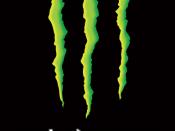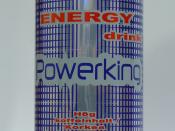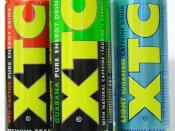The most popular beverage with 34.5 million consumers in 2011 is energy drink (Guilbeau 423). The United States energy drink industry accounted for $11 billion in retail sale in 2012 and is expected to reach $52 billion by 2016 (Thorlton et al 1175). According to the Nursing for Women Health Journal in an article called "Health risks of energy drinks": "Energy drinks are soft drinks with ingredients designed to increase energy and provide stimulation, but the content and concentration vary among brands, with no recommended standards" (424). These ingredients may include caffeine, ginseng, guarana, bitter orange, B- Vitamins, taurine and sugar. According to a 2010 study commissioned by Food and Drug Administration (FDA) "65% of energy drinks consumers are 13 to 35 years old, and " more recent reports shows that 30 to 50% of adolescents and young adults consume energy drink" (Arria et al 1). Moreover, "35% of eighth graders and 29% of both tenth and twelfth graders consumed an energy drink during the past year, and 18% of eighth graders reported using one or more energy drinks every day" (Arria et al 2).
Health professionals, scientists and other experts are concerned by the fast consumption of energy drinks, especially by children and adolescents. Indeed, reports of health complications, emergency department visits, injuries, and deaths related to energy drink consumption increased (Arria et al 1). Even if it is known as a soft drink, sweet and popular, the consumption of energy is harmful because of its side effects and dangerousness for the health; therefore people should reduce consume it.
According to the New-York Times magazine in its article called "Who made that energy drink", the market of energy drink took off in United states in 1997 when an Austrian named Distrisch Maleschitz brought his beverage under the...


